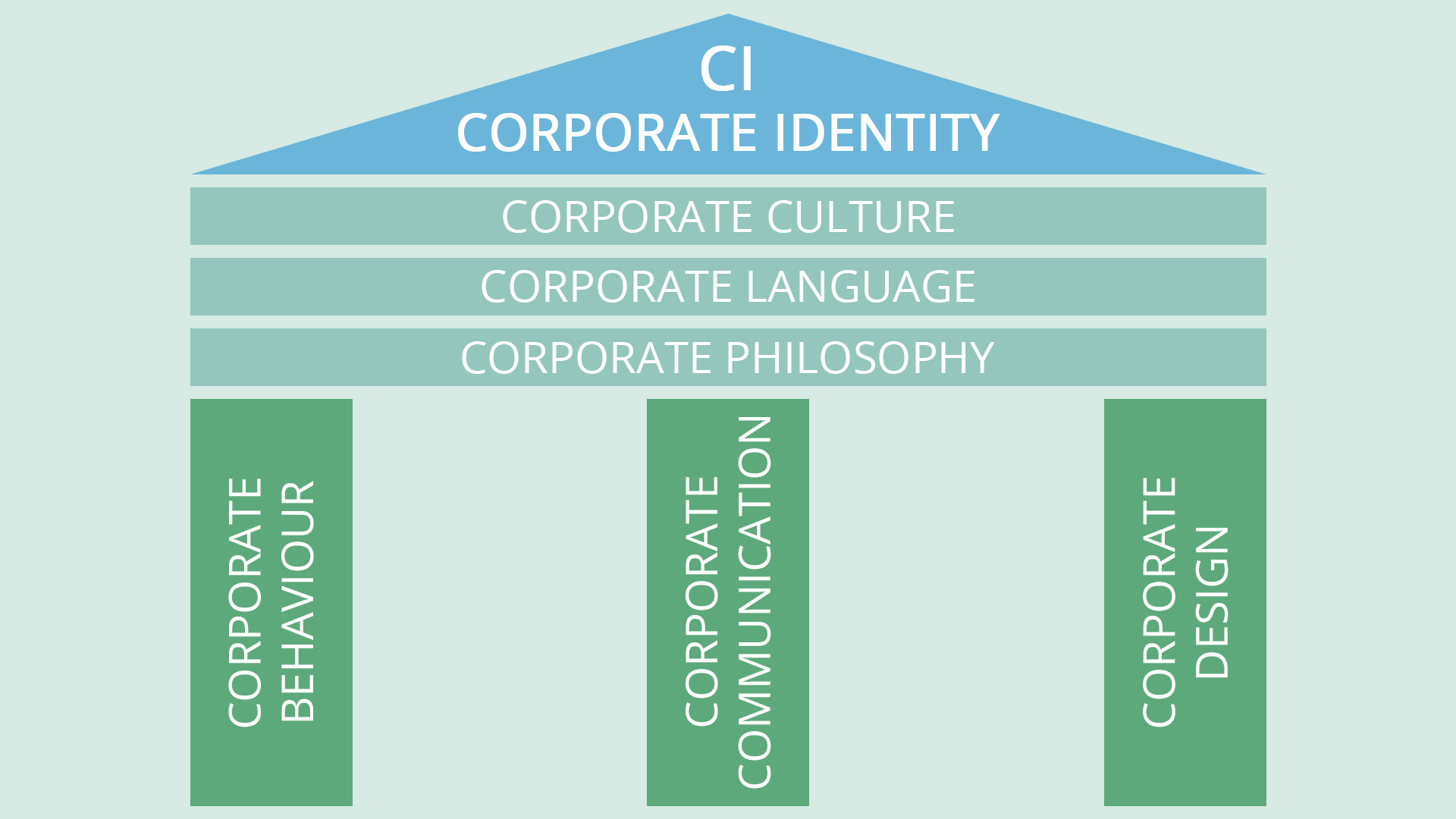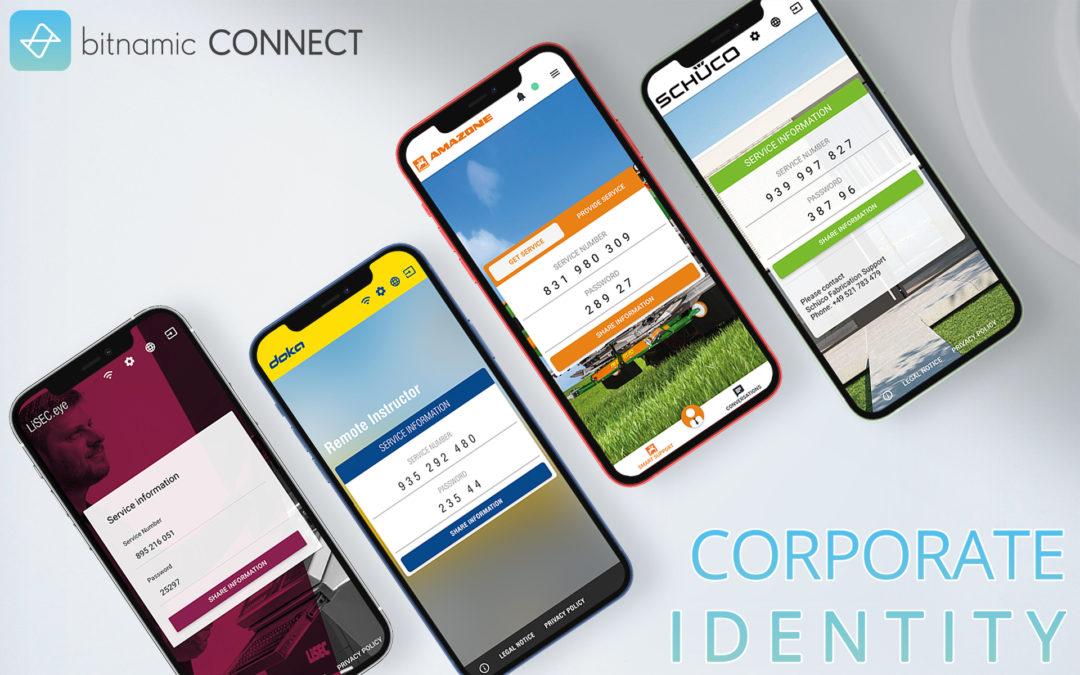A bitten apple, a black dynamic hook, a yellow M on a red background — everyone knows these logos and immediately associates them with a particular company. But a trademark does not constitute corporate identity; it is merely a part of it.
Companies are always seen as a unit, the many areas that make them up — philosophy, communication, design, etc. — are perceived as an “identity”. This must be shaped in a targeted manner in order to project a positive, unmistakable image to the outside world and to make one’s own company a success.
Definition — What is corporate identity?
Corporate identity refers to the sum of a company’s characteristics that distinguish it from others. It shapes the image of the company, gives it an individual personality and sets it apart from the competition.
The aim of a corporate identity strategy is thus to create a unique corporate profile with high recognition value.
Components – What is part of the corporate identity?
Corporate identity encompasses several parts; a good logo alone, for example, is not enough to set a company apart from the competition. The decisive factor is what is associated with it.
In general, a distinction is made between six areas that are interrelated.

Corporate behaviour
Corporate behavior means the appearance of the company — i.e. the management and employees — to customers, partners, interested parties, etc.
It is about representing the company through one’s own behavior and creating a positive image. Transparency, the ability to accept criticism, and good form are crucial.
Corporate communication
As the name suggests, corporate communication describes the entire corporate communication, both internally and externally. The aim is to establish and communicate a uniform image and to strengthen the associated image.
Corporate design
Corporate design refers to the visual identity of the company. It encompasses all visual means of communication, from the company logo and work clothing to letterheads and business cards.
Corporate behavior, corporate communication and corporate design are considered the three pillars of corporate identity.
Corporate culture
Corporate culture means the values, ideas and norms of the company; it is closely linked to the prevailing working atmosphere. Every employee should be able to identify with the corporate culture and adhere to the defined behavioral patterns.
Corporate language
The specific language level at which the company communicates internally and externally is called corporate language.
Corporate philosophy
Where do the origins of the company lie, what vision drove the founder? They form the corporate philosophy, the body of thought that defines the company and distinguishes it from its competitors.
Advantages of a good corporate identity
Designing one’s own corporate identity is not an easy undertaking, but the resulting benefits can be profited from in the long term.
Higher recognition value
A memorable logo, an appealing corporate philosophy and professional interaction with customers, partners as well as employees ensure a higher recognition value. The company is associated with positive experiences and thus mentally stored.
Stable image
To the outside world, a good corporate identity communicates the image of a structured, stable company. Products or services offered are seen as reputable, the company’s own brand is strengthened, and it stands out from the competition.
More “we”-awareness
Those who follow common guidelines because they can identify with them feel a stronger bond with their colleagues and employers — and thus with the company itself. Employees are more satisfied, team awareness is more pronounced, which leads to greater economic success.
Stronger customer loyalty
Customers do not focus exclusively on quality and price. They place their trust in companies with which they have already had good experiences or which represent values that correspond to their own ideas. A good corporate identity retains existing customers and at the same time piques the curiosity of prospective customers.
More efficient work processes
Uniform guidelines ensure smoother processes within the company, which leads to cost savings. Transparency, communication and flexibility are essential here — rigid adherence to rules does not always lead to success, but sometimes inhibits employee creativity and motivation.
Consciously shaping your own corporate identity — and profiting from it
Creating and consolidating an individual corporate identity and linking it with positive connotations: this results in credibility, trust and ultimately greater business success. It is important to implement your own corporate identity at all levels, while always keeping an eye on the spirit of the time so that adjustments can be made if necessary.
To ensure that you can implement your corporate identity on all levels, we offer bitnamic CONNECT in the form of a customized service app: On request, we provide our app in your personal corporate design. This eliminates the third-party character and you can offer customers and employees your own app for download in the store.
Would you like to learn more about bitnamic CONNECT? Feel free to arrange a non-committal demo appointment with our sales team.


